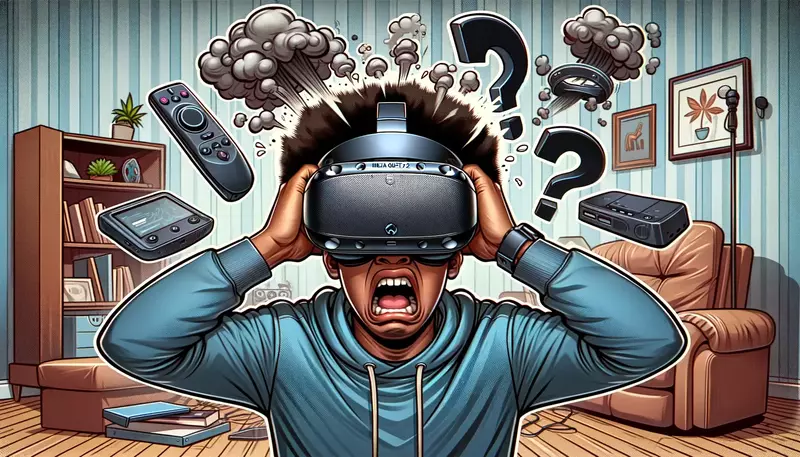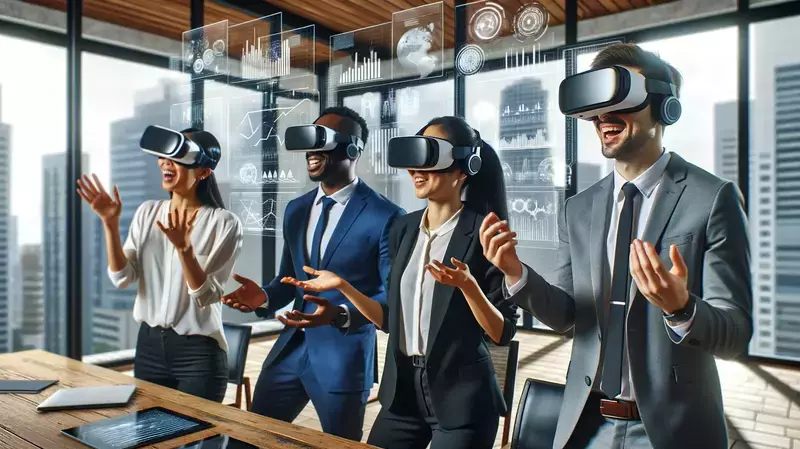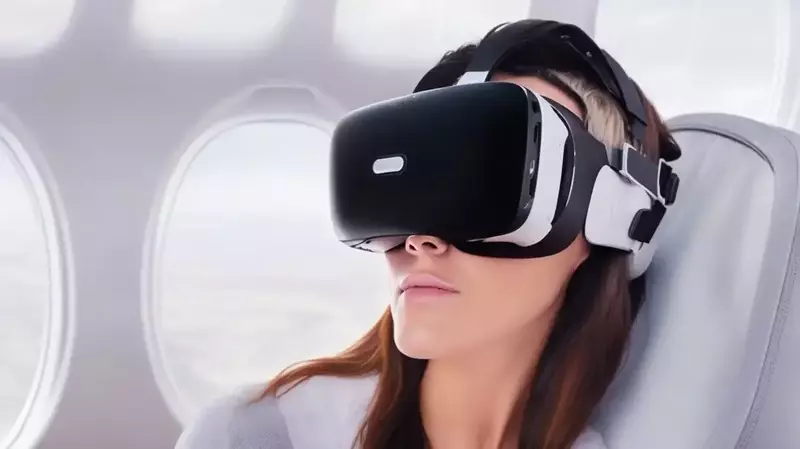This site contains affiliate links to products, and we may receive a commission for purchases made through these links.
How many virtual reality headsets are sold each year? This intriguing question is at the forefront of discussions surrounding the ever-growing VR market. To gain a comprehensive understanding of the VR headset market, this blog post will provide an analysis of annual sales figures and insights into current trends in consumer spending.
We’ll begin by offering an overview of VR headset sales throughout recent years to establish a clear understanding of the market size. Next, we’ll discuss current trends in VR content revenue and consumer spending that contribute to the increasing popularity of these immersive devices.
Furthermore, our exploration will extend to projected future sales figures as well as factors influencing both vr gaming industry growth and overall vr adoption rates. By examining these elements closely, you can expect to gain a thorough understanding of how many virtual reality headsets are sold each year and what lies ahead for this exciting technology.

Overview of VR Headset Sales
In recent years, the popularity of virtual reality (VR) has skyrocketed, with an increasing number of people investing in VR headsets. This technology allows users to immerse themselves in a digital world, providing unique gaming experiences and opportunities for exploration. In this section, we will delve into the sales figures for VR headsets over the past few years and discuss how these numbers have evolved.
A Brief History of VR Headset Sales
In the early 2010s, Oculus Rift and HTC Vive ushered in a new era of consumer-oriented VR headsets. However, it wasn’t until 2016 that these devices gained significant traction when Sony released its PlayStation VR headset. Since then, numerous other manufacturers have entered the market with their own offerings.
- 2016: Approximately 6.7 million units sold worldwide.
- 2017: A slight dip to around 5.9 million units sold globally.
- 2018: The market rebounded with roughly 8 million units sold across all platforms.
- 2023:An estimated total of nearly 10 million units were shipped during this year alone.
This upward trend continued through subsequent years as more consumers became interested in experiencing virtual reality at home or on-the-go using standalone devices like Facebook’s Oculus Quest series (source). As a result, the VR headset market has grown substantially, with millions of people now owning these devices.
Market Share by Manufacturer
While there are numerous manufacturers producing VR headsets, a few key players dominate the market. These include:
- Oculus (Facebook): With their Rift and Quest series, Oculus holds a significant share of the market.
- Sony: The PlayStation VR is popular among console gamers and continues to sell well since its release in 2016.
- HTC:The Vive series offers high-quality experiences for PC gamers but faces stiff competition from other brands like Valve’s Index headset.
In addition to these major players, smaller companies such as Pimax and HP have also entered the fray with their own unique offerings. It will be fascinating to observe how the competitive landscape of virtual reality headsets changes as technology progresses and consumer interest increases. Stay tuned for more updates on virtual reality headset sales.
A comprehensive examination of virtual reality headset sales reveals that this technology is increasingly becoming more popular. This section will now explore the current trends in VR headset sales to gain further insight into their growth.
Current VR Headset Sales
In recent years, the virtual reality (VR) headset market has experienced significant growth as more people become interested in immersive gaming and exploration experiences. In this section, we will discuss the current state of VR headset sales, including total units sold and market share by manufacturer.
Total Units Sold
According to a report from The Journal, approximately 8.8 million VR headsets were shipped worldwide in 2022. The 2022 figures demonstrate a considerable surge in VR headset sales, reflecting the increasing consumer demand for virtual reality technology.
Market Share by Manufacturer
The VR headset market is ruled by several top players that have gained prominence in the industry. These manufacturers include:
- Oculus: Owned by Facebook (now Meta), Oculus is one of the most popular brands in the world of virtual reality headsets with its flagship products like Oculus Quest 2 driving their success. According to Business of Apps, Oculus accounted for nearly 58% of global VR headset shipments in Q4 2023.
- Sony PlayStation: Sony’s PlayStation division has also made significant strides within the realm of virtual reality through its PSVR system designed specifically for use with PlayStation consoles. VentureBeat reported that, since its introduction in 2016, Sony has sold over 5 million PSVR headsets.
- HTC: HTC is another major player in the VR headset market with its Vive series of products. According to a report from Counterpoint Research, HTC held approximately 8% of the global VR headset market share in Q4 2023.
Other notable manufacturers include Valve, Pico Interactive, and HP; however, their combined market share remains significantly smaller compared to Oculus, Sony PlayStation, and HTC.
Growth Trends
Factors such as improved hardware capabilities, more accessible pricing strategies for consumers, and an expanding library of high-quality content have contributed to the increasing popularity of virtual reality technology. As a result, industry experts predict that VR headset sales will continue on an upward trajectory for years to come. For instance, Grand View Research forecasts that the global virtual reality market size will reach $62.1 billion by 2027 at a compound annual growth rate (CAGR) of 21.6% from 2023 to 2027.
Current figures for VR headset sales suggest that there is an increasing appetite for the technology, and this inclination appears likely to persist. Projected VR headset sales will provide insight into how popular virtual reality may become over time.
3. Projected VR Headset Sales
The future of virtual reality headset sales looks promising, with experts predicting significant growth in the coming years. In this section, we will explore various projections for total units sold and market share by manufacturer.
Global Market Growth Projections
According to a report by Grand View Research, the global virtual reality market is expected to grow at a compound annual growth rate (CAGR) of 21.6% from 2023 to 2028. This impressive growth can be attributed to factors such as technological advancements, increased consumer interest in immersive experiences, and more affordable pricing options.
Manufacturer Market Share Predictions
Competition in the VR headset sector is anticipated to become more intense as the market expands. Currently, Oculus (owned by Facebook), Sony Interactive Entertainment (PlayStation VR), HTC Vive Corporation (Vive series) and Valve Corporation (Valve Index) dominate the industry landscape as competition in the growing VR headset market intensifies.
- Oculus: With its popular Quest line of standalone headsets and competitive pricing strategy, Oculus is poised for continued success in capturing a significant portion of the growing VR market.
- Sony Interactive Entertainment: As anticipation builds for PlayStation’s next-generation console release (PSVR 2) within the next few years, it’s expected that Sony will maintain or even increase its current market share position through strong hardware offerings coupled with an extensive library of exclusive content.
- HTC Vive Corporation: HTC’s focus on high-quality, premium VR experiences for both consumers and enterprise customers may help the company maintain a strong presence in the market as demand for more advanced applications grows.
- Valve Corporation: Valve’s Index headset has garnered praise from enthusiasts for its cutting-edge technology and immersive capabilities. The company is likely to continue attracting a niche audience of dedicated VR gamers who prioritize performance over price.
New Entrants and Market Disruptions
The virtual reality landscape is ripe for disruption, with new entrants like Apple rumored to be developing their own VR headsets. AR could lead to the creation of devices that offer a more unified experience between physical and digital realms. As these innovations emerge, they have the potential to reshape the market dynamics and create opportunities for newcomers or existing players willing to adapt quickly.
In summary, projected VR headset sales indicate robust growth in both total units sold and manufacturer market share. As consumer interest continues to rise alongside technological advancements, we can expect this trend to persist well into the future.
Expected sales of VR headsets are anticipated to remain robust due to the heightened awareness of virtual reality’s potential. Subsequently, let’s examine some of the elements that affect these sales numbers.
4. Factors Influencing VR Headset Sales
In this section, we will explore the various factors that influence virtual reality headset sales, such as technological advancements, consumer demand, and pricing strategies. Understanding these elements can help us better predict future trends in the VR market.
Technological Advancements
One of the primary drivers of VR headset sales is technological advancements. As technology continues to improve and evolve, manufacturers are able to create more immersive experiences with higher resolution displays, improved tracking systems, and enhanced haptic feedback. These improvements not only make virtual reality more appealing but also encourage consumers who may have been hesitant about earlier models to invest in newer headsets.
Consumer Demand
The growth of consumer interest in virtual reality has a significant impact on headset sales. The increasing popularity of VR gaming, educational applications like Google Expeditions or medical training simulations contribute to rising demand for VR devices. Additionally, social media platforms like Facebook Horizon and popular multiplayer games such as Rec Room provide users with new ways to connect virtually – further driving up interest in owning a VR headset.
- Gaming: Popular titles like Beat Saber or Half-Life: Alyx attract gamers looking for unique experiences.
- Educational Applications: Virtual field trips or interactive learning modules offer students an engaging way to learn through immersion.
- Medical Training: VR simulations allow medical professionals to practice procedures and develop skills in a safe environment.
- Social Media Platforms: Facebook Horizon and other social VR experiences enable users to connect with friends, family, or new acquaintances from around the world.
Pricing Strategies
The cost of virtual reality headsets plays a crucial role in determining sales figures. Manufacturers must balance between providing innovative technology and keeping costs reasonable for purchasers. The introduction of budget-friendly options like the Oculus Quest 2, which provides an all-in-one wireless experience at a lower price point than its competitors, has helped make virtual reality more accessible to a wider audience. On the other hand, premium devices such as Valve Index cater to enthusiasts willing to pay for top-of-the-line performance and features.
In conclusion,
Frequently Asked Questions How Many Virtual Reality Headsets Are Sold Each Year?
How many total VR headsets sold?
As of 2023, over 60 million virtual reality headsets have been sold worldwide. This number includes various types of VR devices such as tethered, standalone, and mobile-based headsets. The sales figures are constantly growing due to the increasing popularity and advancements in virtual reality technology.
How many people buy VR headsets?
The exact number of people who buy VR headsets is difficult to determine since it varies across different regions and demographics. However, millions of consumers worldwide have purchased a virtual reality headset for gaming or other immersive experiences.
How well are VR headsets selling?
VR headset sales continue to grow year-over-year with an estimated compound annual growth rate (CAGR) of around 18% between 2023-2025. Factors contributing to this growth include technological advancements, increased content availability, affordability improvements, and wider adoption by both consumers and businesses alike.[source]
!! For more information about the different VR headsets on the market, check out this product specification list.
Conclusion
As the market for VR headsets continues to expand, projections indicate that more of these gadgets will be purchased annually. The current sales of VR headsets are encouraging and suggest a bright future for this technology. Nonetheless, a range of elements could potentially affect the amount of individuals purchasing these gadgets in the near future, including technological developments, cost and availability. It is uncertain what the eventual annual sales figures of VR headsets will be in the future.
Discover the latest advancements in virtual reality technology and find out how many headsets are sold each year. Join us to explore this cutting-edge industry and learn more about its potential applications.

Espen
Espen is the Director of PursuitMeta and has written extensively about Virtual Reality and VR Headsets for years. He is a consumer product expert and has personally tested VR Headsets for the last decade.




Leave a Reply